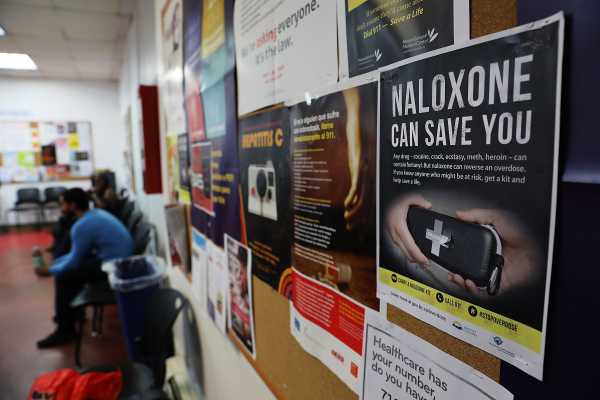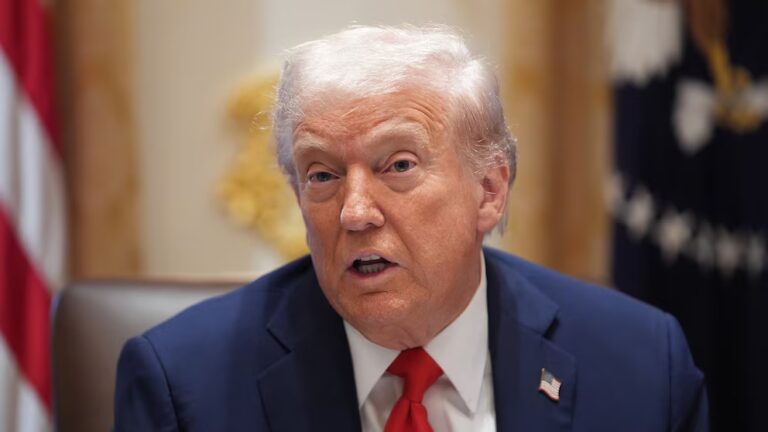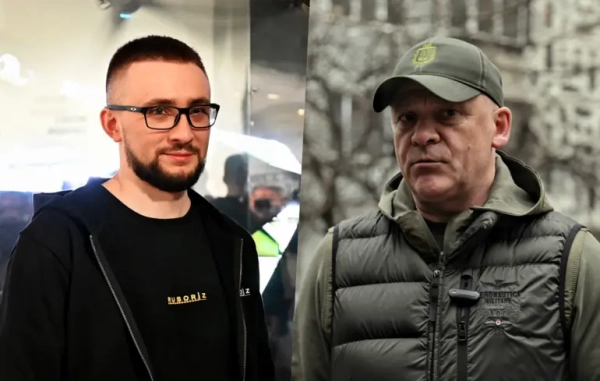
Something is wrong: In the midst of the worst drug overdose crisis in US history, the price for a life-saving drug has increased sixfold.
Kaleo has hiked the price of its naloxone drug by 600 percent — from $575 to $4,100 — over the last four years. According to a new investigative report from Sens. Rob Portman (R-OH) and Tom Carper (D-DE), the drug company wanted to “capitalize on the opportunity” presented by America’s opioid crisis. More than 70,000 people died of drug overdoses in 2017.
Thankfully, EVZIO isn’t the only version of naloxone — which quickly reverses the effects of an opioid overdose, saving thousands of lives over the years — available. There is also a nasal spray lay people can use as well as generic versions of the drug.
Still, this is the story of a company that set a debut price twice as high as outside experts recommended. Then, when the market didn’t materialize as it hoped, didn’t course-correct — instead, EVZIO hiked the price even more.
”Kaléo’s more than 600 percent price increase of EVZIO not only exploits a country in the middle of an opioid crisis,” the Senate report states, “but also American taxpayers who fund government-run health care programs designed to be a safety net for our country’s elderly and most vulnerable.”
Drug prices might be one of the few opportunities for compromise between the new Democratic House and the Republican Senate and the Trump White House. Stories like Kaleo’s are sure to spark calls for action, even if it is an outlier in some ways; most price hikes aren’t for treatments that are used in emergencies to save people’s lives.
But in its sensationalism, the tale of EVZIO lays bare many of the challenges for fixing the Byzantine, distorting system that allows a life-saving drug to see its price surge 600 percent during this time of most desperate need.
Why a life-saving drug saw its price increase sixfold
Portman and Carper, who oversee investigations for the Senate homeland security committee, have launched several investigations into the business side of the opioid crisis. Kaleo has been in the Senate’s sights for a while now, and the 99-page report is worth reading in full if you have the time.
EVZIO was a novel treatment when it premiered in 2014, allowing laypeople to inject naloxone for a person who has overdosed. The previous injectable versions of the drug required some medical expertise, to inject the drug into a vein, while EVZIO could simply be injected into muscle — and came with audio instructions, no assembly required.
With that in mind, the Senate report tells the remarkable saga of a company searching for a profitable business model amid a deadly crisis.
This is a complex story, not well suited to being summarized in bullet points. But I will do my best. Here is what happened, according to Senate investigators:
1. Two separate outside experts recommended Kaleo set the initial list price between $250 and $300 for EVZIO for its 2014 launch. Insurers had told them that at $300, patients’ access to the drug would start to be restricted and, at $500, they may refuse to cover it altogether. Even at the lower price, the experts thought Kaleo could “own” the naloxone market.
2. The company nevertheless set its launch price at $575. That was just low enough to prevent deep restrictions on access under Medicare and for many commercial patients. If the price hit $600, most Medicare patients and an estimated 20 percent of commercial patients would have been required to pay more money out of their own pocket for the drug, which would likely lead to fewer prescriptions being filled.
3. Sales still didn’t materialize. This was likely because, as the company had been warned, insurers wanted cheaper alternatives be tried first before moving to a more expensive version (a strategy known as step therapy) or prior authorization from a doctor before they would approve a prescription.
Kaleo thought it was dealing with more than the bureaucracy of health care administration, too, as the Senate report details. Patients might not always want to be prescribed naloxone, fearing the stigma and resenting the assumption they would overdose. Doctors likewise could be worried about the implication that they were somehow mismanaging their patients if they required a prescription for an overdose reversal drug.
4. The company’s first price hike occurred about a year and a half after the drug debuted, from $575 to $750. The rationale for that first increase, as described in the Senate report, is telling: A company executive asserted “such post-launch price increases were ‘standard’ in the pharmaceutical industry.”
5. With sales lagging, Kaleo brought in new pricing consultants who advocated a two-pronged approach: dramatic price increases and the aggressive use of specialty pharmacies. They revamped the entire model for distributing EVZIO. Prescriptions would be routed through specialty pharmacies, circumventing the traditional market where health plans and pharmacy benefits managers had restricted access to the drug.
The company would work with doctors and the specialty pharmacies to clear away as many of the bureaucratic hurdles as possible — step therapies, prior authorizations, etc. — to smooth out the process for getting the drug to their patients. In short, paperwork would no longer get in the way of EVZIO getting prescribed.
6. Some commercial health plans were expected to keep covering the drug, but under the new model, Kaleo would cover any copays, and for patients whose insurance didn’t cover the drug, Kaleo would provide it to the patient at no charge.
To cover those costs, the company would need to raise the price dramatically, per the Senate report.
”In short, sales to patients with insurance coverage for EVZIO were intended to cover Kaleo’s cost to send the drug to patients whose insurance did not cover Kaleo,” the Senate investigators wrote. “Thus, the need to raise the price.”
7. In the following months, Kaleo hiked the price of its naloxone injection to $3,750 and then to $4,100. Here we find the most striking portion of the Senate report (emphasis mine):
The report doesn’t draw attention to it, but I found the final price of $4,100 interesting. The investigators noted early in their findings that a single kit of naloxone was estimated to be cost-effective as long as it was priced below $4,480. So the price Kaleo has settled on for its naloxone product came in just below that threshold — the price is just about as high as it can be while still remaining, per the estimates, cost-effective.
8. The company notably introduced a new version of EVZIO with a higher dosage, which was classified as a new drug by the FDA. As a result, Medicaid and Medicare would end up paying a higher price for the drug, according to the Senate investigators.
Company executives insisted that their various decisions were made with private insurers in mind, not the government programs. Yet the company’s windfall would come from Medicare and Medicaid.
As internal Kaleo documents cited in the Senate report explained, “Medicare is a small [percentage] of unit sales … but a large [percentage] of net sales.”
According to the report, Medicare accounted for just 16 percent of EVZIO units sold in the first quarter of 2017, but 56 percent of the revenue. Likewise, Medicaid was 8 percent of the units moved, but 19 percent of the revenue.
Commercial payers, meanwhile, represented 66 percent of the units sold, but just 25 percent of the revenue.
9. The Senate investigators estimated that EVZIO’s total cost to taxpayers over the last four years has been $142 million.
10. You can read Kaleo’s full response to the Senate findings and broader public scrutiny here. According to the company, they have never turned a profit on EVZIO. They also said that, based on reports from the field, their drug has helped save more than 5,000 lives in the last few years.
”Patients, not profits, have driven our actions,” they said.
This story appears in VoxCare, a newsletter from Vox on the latest twists and turns in America’s health care debate. Sign up to get VoxCare in your inbox along with more health care stats and news.
vox-mark
VoxCare
Subscribe
By signing up, you agree to our Privacy Policy and European users agree to the data transfer policy.
For more newsletters, check out our newsletters page.
Join the conversation
Are you interested in more discussions around health care policy? Join our Facebook community for conversation and updates.
Sourse: vox.com






